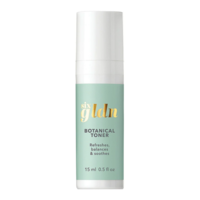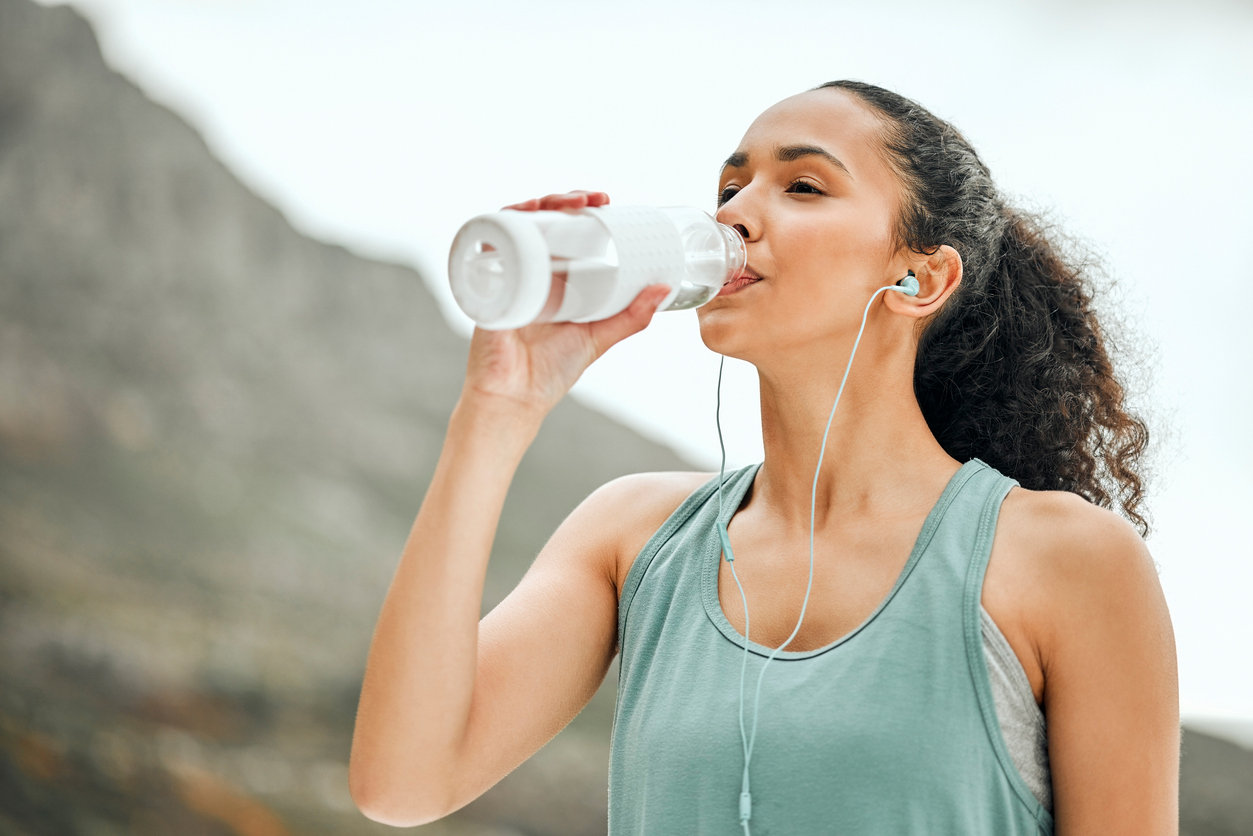Many of us grew up with the ethos that exercise was always a good thing no matter how much of it we did. In fact, we were taught that most people don’t get enough physical activity, both directly and indirectly.
According to the CDC, only 28% of adult Americans meet their weekly exercise needs (150 minutes of moderate-intensity physical activity and 2 days of strength training) and 25% of adult Americans don’t exercise at all — so it makes sense as to where that message comes from.
But too much of a good thing can be a bad thing. Over-exercising or doing the wrong kinds of exercise for females can lead to hormonal dysfunction.
When it comes to keeping your hormones and fertility in check, exercise can be an incredible tool, but it’s about finding the sweet spot of movement, giving your body ample recovery time, and focusing on the right types of exercise.
Not all exercise is created equal, after all. We should work out differently based on our sex, stage of life, goals, and current state of health.
Hormones Affected by Exercise
Exercise has the capacity to balance, suppress, and increase certain hormones. It depends on what type we do, how long we do it for, and how much rest we give our bodies after the fact.
At a high level, exercise helps you maintain a healthy weight and body composition, keeps inflammation levels in check, reduces stress, improves sleep quality, and promotes the utilization of stored fat as energy — all of which directly aid in hormone regulation.
Consistent, moderate exercise is also generally associated with more regular menstrual cycles.
Here’s a breakdown of what goes down when you exercise:
Insulin
Exercise increases insulin sensitivity, which leads to improved glucose uptake by your muscles during and after a workout, and helps boost energy production. This also enables better blood sugar control over time.
Cortisol
Exercise temporarily increases cortisol levels, which mobilizes stored fat and helps regulate your metabolism. This temporary rise in cortisol is what makes exercise a stress-relieving activity because it not only simultaneously stimulates the release of endorphins (“feel good hormones”), but also brings your cortisol levels back down to balance after the fact.
In this sense, regular exercise helps control cortisol levels and prevent excessive elevation.
Human growth hormone (HGH)
Strength training and high-intensity interval training in particular both stimulate the release of HGH, which is essential for tissue repair, muscle growth, and a healthy metabolism.
Regular exercise, especially strength training, can optimize HGH production, which boosts muscle and tissue growth, fat metabolism, protein synthesis, healthy sleep patterns, and overall hormone balance.
Estrogen
Routine physical activity can help support estrogen metabolism in the liver, leading to a decrease in excess circulating estrogen levels, which happens at certain points in our cycle or when we’re postmenopausal.
A surplus of body fat can also lead to inordinately high levels of estrogen so regular exercise, by helping to maintain a healthy body composition, can contribute to balanced estrogen levels.
Progesterone
Consistent exercise can help support healthy progesterone levels which tend to be low during your luteal phase and are vital for maintaining a regular cycle and supporting fertility, sleep, mood, and a healthy metabolism.
It’s important to note that excessive training and extremely low body fat on the other hand can lead to menstrual irregularities or even the absence of menstruation (amenorrhea), so it’s all about finding the right equilibrium.
Testosterone
Most people falsely assume testosterone is a male hormone, when in reality it’s vital for female health too by helping build muscle and burn fat, increase energy and sex drive, strengthen bones, and support ovarian function, follicle development, and cognition.
Regular exercise, especially strength training, and walking, helps keep your testosterone levels in a healthy range.
Thyroid hormones
Moderate exercise stimulates the production and release of thyroid hormones (T3/T4), which helps regulate metabolism and energy balance. Similar to estrogen and progesterone, over-exercising can lead to a reduction in your thyroid hormones, so it’s essential to find a healthy balance in exercise intensity and regularity, as well as recovery.
Serotonin
Exercise stimulates the production of serotonin in the brain, which helps boost mood, reduce stress, relieve anxiety, improve digestion and sex drive, as well as regulate sleep, appetite, and cravings.
Endorphins
Exercise is infamously known for secreting endorphins, aka our feel-good hormones, which help reduce stress and boost our mood. These positive effects indirectly contribute to hormone balance by reducing stress-related disruptions in our hormones.
Epinephrine and norepinephrine, two of the main endorphins, also help the body convert the foods we eat into energy.
Leptin and ghrelin
Leptin and ghrelin are both involved in appetite regulation. Leptin contributes to feelings of satiety and ghrelin contributes to feelings of hunger. Regular exercise can help moderate these hormones, which helps stimulate a healthy appetite while preventing excessive cravings. Maintaining a balanced appetite supports overall hormonal equilibrium.
The Role of Hormones in Weight Maintenance
Weight gain
Excess estrogen, insulin (which helps the body convert sugar to energy), and cortisol, in addition to limited T3/T4 (thyroid hormones), are the hormones responsible for weight gain or that prevent you from seeing the results in the gym you’ve been craving.
Fat loss
Ample amounts of human growth hormone (HGH), testosterone, progesterone, glucagon (helps the body use stored fat for energy), T3/T4, Peptide YY (produced by the GI tract post-consumption to keep you satiated), and adiponectin (produced by fat cells to boost insulin sensitivity) are the hormones responsible for keeping us lean and promoting fat loss when necessary.
Muscle gain
Adequate human growth hormone (HGH), testosterone, insulin-like growth factor 1 (works with HGH to facilitate muscle growth and repair), insulin, and T3/T4, in addition to controlled amounts of cortisol, promote muscle development and growth.
That is if you exercise your muscles!
How To Use Exercise to Balance Your Hormones
1. Know what you need.
If your body is already running overdrive, you’ve had a stressful day/week, or are otherwise feeling entirely depleted, a HIIT class is the last thing your body needs and will likely end up exacerbating the issue.
High-intensity interval training can be used to your advantage as it does increase the production of vital hormones such as testosterone and growth hormone, which are both vital for building and maintaining lean muscle mass. However, it needs to be leveraged in moderation with adequate rest in between sessions to ensure you’re getting maximum payoff.
2. Listen to your body.
On days you feel like you’re running on overdrive, walking, yoga, or low-impact workouts like pilates and tai chi are great for activating your parasympathetic nervous system, while also giving you the mood boost and hormonal regulation that comes with exercise.
If your mood is low, steady-state cardio such as running, walking, cycling, or rowing is great for getting your dopamine, serotonin, and other endorphin levels up.
If you’re feeling lethargic, but not entirely devoid of energy, a weight training session is great for getting your vitality up and keeping those levels sustained.
If you feel worse after a workout than before you started, that’s a sign you pushed too hard or did the wrong type of movement based on what your body needed that day. It takes a while to build up this type of interoception (ie, being in touch with internal signals from your body), but once you started tapping into your body and mind before and after each workout, it gets easier.
You can also try a wearable such as an Oura Ring, Whoop, Apple Watch, or Fitbit to help you stay accountable to your recovery status so you don’t accidentally put your body into overdrive when it may be in need of rest.
3. Mix it up.
If you’re doing the same workout every single day, you may want to revamp your approach. When you do the same exercise on a daily basis, your body adapts, meaning you’re no longer challenging your body in a way that’s necessary to see all the benefits of exercise in the first place.
It can also lead to muscle imbalances and neglected fitness components that are essential to get optimal benefits out of your exercise, such as mobility, cardiovascular health, and muscle fiber. It’s all about supporting the bigger picture of health and building your way to more comprehensive workouts by training all the individual parts.
Exercise is amazing for the female body in that it supports healthy hormone production and strengthens our bodies for conception, but not when done in excess. Ample recovery, getting a variety of different movement types in, and focusing on exercise that builds whole-body strength is critical if you’re working out for the sake of your hormones and fertility.
Caroline McMorrow is Rescripted's Content Manager.













.jpg)

%20Health%20&%20Household.png)







